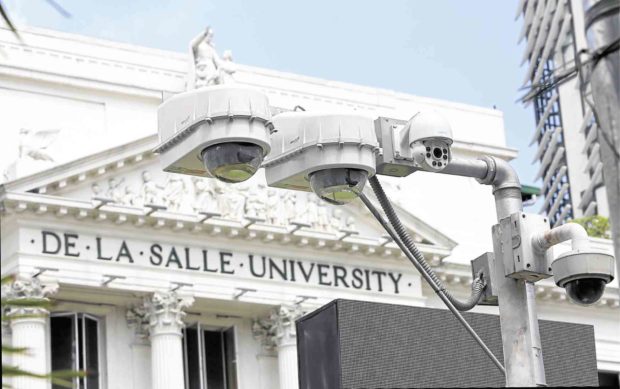
“Catch-All” cameras keep watch on Taft Avenue for traffic violations.—MARIANNE BERMUDEZ
Take human contact out of the equation and traffic enforcement in Metro Manila would be less prone to bribery and extortion.
Engineers and students from De La Salle University (DLSU) had this in mind when they developed a software that would allow transport authorities to “intelligently” catch traffic violators without the need for human intervention.
Dubbed “Catch-All” — for Contactless Apprehension of Traffic Violators on a 24-Hour Basis and All Vehicle Direction System — the program uses artificial intelligence to spot motorists who have violated traffic regulations, including the number coding scheme and the rules against speeding, running a red light and swerving, among others.
The Metropolitan Manila Development Authority (MMDA) currently uses a no-contact apprehension system through a network of cameras set up on major roads. The system, however, still requires personnel to monitor video feed from the cameras.
Catch-All does away with the need for keen-eyed watchers as it can already collate the visual information, according to science research specialist Robert Kerwin Billones. Human intervention would only be needed to verify the data before traffic violation tickets are issued to motorists.
The P4-million project was funded by the Philippine Council for Industry, Energy and Emerging Technology, Research and Development (PCIEERD), which is under the Department of Science and Technology.
PCIEERD Executive Director Carlos Primo David said the council would be meeting with MMDA officials this week to discuss the program.
Since the technology was tested in May along Taft Avenue in front of DLSU campus, 10 Catch-All cameras had recorded around 300 traffic violators, Billones said.
A motorist was immediately made aware of his violation through an LED screen mounted in the area, which displays his vehicle’s license plate information and the violation he committed.